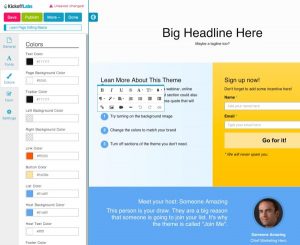Brands can cut through the noise using data-driven insights, delivering value at key moments and building authentic connections.

Today’s consumer journey is complex, chaotic and crowded. Consumers use multiple platforms to solve problems, jumping outside the traditional sales funnel. The once-standard linear path to purchase no longer reflects reality.
Numerous brands fight for user attention across platforms to drive a click or conversion. It’s no wonder that the consumer experience suffers from misaligned marketing. Consumers are often met with the wrong content at the wrong time, leading to much noise and frustration. For brands caught in the scuffle, this means wasted marketing spend.
The firehose method of flooding consumers with marketing content does not work. Very little sticks and little of it provides the value consumers seek. Brands that want success must be ready with the content and solutions consumers need and make it accessible on the consumers’ own terms.
Here’s my prescription for meeting consumers at the right time and place across the consumer journey.
1. Follow the data to get insights about what consumers want
Despite the chaos, the customer journey still involves specific moments that matter most, like when consumers have a problem they need help solving. These moments allow your brand to be a trusted guide instead of a journey interrupter — but only if you’re strategic. Use these opportunities to provide the support that builds trust and meaningful connections.
The challenge is to uncover your opportunities to guide consumers. It starts with understanding where they are, the questions they have and the issues they’re trying to solve.
How? You can use real-time data from the variety of assets that consumers are engaging with. Assess how consumers engage with your emails, how they move across your site or what social media content they enjoy to better understand the topics that resonate with them.
However, the most accurate and current data available to marketers is available on Google Search. People routinely search for solutions to their most personal problems. We joke about being more open with Google than our closest family. It’s funny because it’s true.
Use Google consumer search data to gain deep insights about your audience. Instead of guessing what people want, you can know for sure. Then, use those insights to create content that resonates with consumers.
2. Go all-in on a cohesive in-store and online consumer experience
While there remains a preference for in-store shopping, the growth of online purchasing (especially among millennials and Gen Z hybrid shoppers) means brands need consistent, positive customer experiences in both settings.
As many as 45% of consumers prefer in-store shopping because of the ease of product comparisons, according to the National Retail Federation. That begs the question — how can you replicate the convenience and service of in-store shopping for the online consumer?
Analyze the consumer data you collect in store and online to understand what customers want. Then, create a digital experience that meets or exceeds their expectations. Consider virtual try-ons, style guides, product selection algorithms and quizzes and specialized chat agents. Let the data be your guide on what you should try.
Take things a step further by integrating the convenient access to information that an online experience provides into a brick-and-mortar experience. Try printing out product comparison guides or posting QR codes that lead to review sites. Like your digital assets, a brick-and-mortar location is an asset to optimize.
An effective and immersive blend of digital and physical makes for a memorable shopping experience that consumers will share and engage with repeatedly.
3. Don’t fall for transaction tunnel vision
Building brand equity is just as important as driving long-term revenue growth. While sales are essential, you should also engage with consumers throughout their buying journey to foster relationships rather than just focusing on transactions.
Focusing on consumer connections lets you build trust and relationships, create loyalty and even encourage consumers to become unofficial brand ambassadors. Together, and in the long term, these elements will boost conversions, sales and revenue, making it cheaper to acquire customers.
Imagine a highly engaged customer segment of true fans who continually buy your offerings, feel invested in your success, leave glowing reviews and become your most loyal word-of-mouth advocates. This marketing superpower builds momentum that organically strengthens the journey for all consumers, from information gathering through point-of-purchase. And it’s what you can achieve when you emphasize connection over transactions.
Connecting and building trust amid the chaotic consumer journey
Today’s noisy and complex marketplaces make it difficult for brands to connect with consumers and understand their position in the buying journey. This leads to challenges for brands and frustrating experiences for consumers who are looking for easy solutions.
To build authentic connections, engage with consumers early and often by providing the value they need. Be available when and where they need you most to become their trusted guide and information source.
The post 3 ways to connect with consumers during today’s complex journeys appeared first on MarTech.
(2)
Report Post




